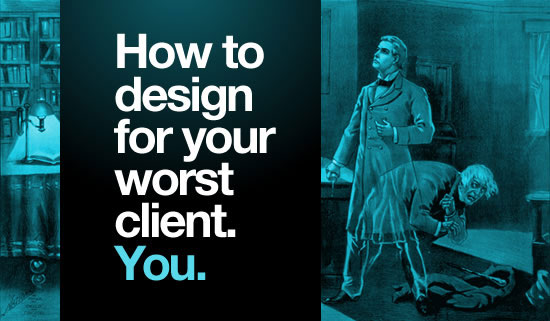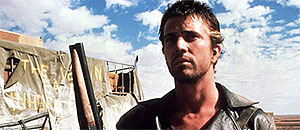Popular Posts
-
I have used every one of these resources as a graphic designer and website developer and have hand picked all of these resources based on th...
-
BADGES Web 2.0 Badges - A set of free badges to download and use in your own designs. Fresh Badge - Quickly generate your own badge. adClu...
-
The Indian finance ministry has begun a public competition to select a design for the symbol of ...
-
Navigation menus have really important role in any website. For big sites full with a lot of pages and articles, drop down menus and tabs ar...
-
We live in a world surrounded by Times New Roman, Arial and Helvetica, typefaces so functional that they have long since become boring. It’s...
-
During current economical times, it’s becoming increasingly difficult to find and secure good clients. A “good” client is one who plays on t...
-
For web designers and graphic designers, gradients provide almost unlimited options for creating the perfect look. This list is a collection...
-
Professional networking is an important part of being a designer and working towards a challenging and rewarding career. Unfortunately, most...
-
MailShadowG is an application that will allow you to sync Outlook with Gmail. MailShadowG is a product of Cemaphore Systems , a California b...
-
Within the music industry there is a great variety in terms of the quality of websites. Some bands have excellent, creative websites, and ot...
Market information
Blog Archive
Website Designing
- Website Designing (133)
- design (100)
- Design Reviews (63)
- web 2.0 (63)
- Cool Websites (61)
- Photoshop (59)
- Tech News (53)
- Social Media Network (50)
- Search Engine Optimization (44)
- Usability (42)
- tutorials (38)
- Graphic (37)
- Insights (33)
- css (28)
- inspiration (26)
- Internet Marketing (25)
- Freelancing (23)
- google (23)
- Current Economic Scenario (17)
- Branding (15)
- accessibility (13)
- showcase (13)
- Image Optimization (12)
- Internet (12)
- Offshore (12)
- Online Advertising (12)
- Typography (12)
- gallery (12)
- Illustrator (11)
- Outsourcing (11)
- Social Media Optimization (11)
- web 3.0 (11)
- Game (10)
- Microsoft (10)
- Logos (9)
- Programming (9)
- Quote (9)
- Software (8)
- Yahoo (8)
- Download (7)
- EVENTS (6)
- HTML5 (6)
- Layouts (6)
- VC Funding (6)
- javascript (6)
- Crazy Boyz (5)
- Fonts (5)
- History (5)
- Ajax (4)
- Books (4)
- Content Management (4)
- Email Marketing (4)
- PPC (4)
- RSS (4)
- dark (4)
- twitter (4)
- wordpress (4)
- Affiliate (3)
- Blog (3)
- Facebook (3)
- Movies (3)
- SEO (3)
- flash (3)
- trends (3)
- Application (2)
- Apps (2)
- Diseases (2)
- Flat Design (2)
- Shopify (2)
- music (2)
- open source (2)
- ATT (1)
- Apple (1)
- Chrome (1)
- Dailer (1)
- Earn Money (1)
- IPL Broadcast (1)
- South Africa (1)
- Technology (1)
- Voice Video Text Chat (1)
- Wordpress themes (1)
- Youtring (1)
- android (1)
- business cards (1)
- colors (1)
- drupal (1)
- electronics (1)
- iPhone (1)
- podcast (1)
Blog offering website designing, website development, digital media marketing, social media strategies, facebook application development and services for online branding.
How to Design for Your Worst Client: You.
As a designer, doing work for yourself is probably the most difficult thing you can ever do. In fact, most dread it. To add to the pressure, creating an online presence is not only vital to get right, it has to be the best. After all, if you can’t prove your skills on your own website then how can you expect someone to hire you?

In this article we’ll examine the barriers that hinder designing for yourself and reveal 10 rules to help you create the best design for yourself. Together we’ll squash that dark side in all of us.
The struggle within
As depicted in the story of Dr. Jekyll and Mr. Hyde the duality of human nature has been a fascinating subject throughout history. Duality is the exploration of good and evil, or in this article, the inner conflict of the creative person. As a designer this struggle within is something that can be a very powerful tool, if you can learn to control it.
Rule #1: Final destination
When you get in your car do you just start driving and hope you get to the right place? No. You would know where you want to go. Same thing goes for your website. Ask yourself what you would like the results to be. Don’t be vague and say "A cool site." It might be to show clients you think through the user experience. It could be to get recognition on some galleries. Maybe you just want a place to experiment and collaborate with other designers. It should be a condensed and focused idea of the overall goal for your site.
Rule #2: Create order
In the Mad Max movies there are no rules and anything goes. This is what happens when you have no order. Pure chaos. The first step is to create some boundaries. Some say make it a real project with a deadline. I don’t think self-imposed deadlines work. Deadlines restrict you and curb creativity. You will be thinking more about the deadline and be more apt to move it if it keeps getting in the way. So dump that.

Define the tasks to meet your above goal. That means outline the specific pages (For example: home, blog, portfolio, about, contact). Define what you want to see at the end of the project.
Rule #3: Content is king
Be as specific as you can on what you would like on each page. That means decide on the content first. I know, it’s a design portfolio. You need something to design though. How many times has a client had you design something without saying what content they want on there, or saying they will get it to you soon (meaning the day before it goes live). Don’t do this to you.
You don’t have to write every line but decide if you’ll have links in the footer, a big bio on the about page, or maybe what items you’ll start out with in your folio section.
Rule #4: Stop comparing
There is always someone better than you. Always. But remember: That person’s first few websites sucked. Not only did they suck, they might have been the worst website ever created. So why are you trying so hard to have the best website ever in one shot? You won’t get better unless you start making your own sites.
Stop using other websites as a crutch while you aimlessly wander looking for something to spark an idea. Since you have your goals defined and know what content you want, you can quickly move along until you find the elements that match your needs. Then STOP looking.
Rule #5: Inspiration perspiration
Sometimes it’s hard to get inspired. It might be because many designers work for agencies all day creating work for others, then get home and don’t feel like sitting in front of the computer. Or they just might feel like they can’t come up with something that is original.
Go to the museum, catch a movie, or just get outside. It will give you a break and might help you find some new ideas. Everyone goes to many of the same places online to get inspired. That might be why you feel like you can’t come up with that great idea that no one has ever seen. You’re looking in the same place as the rest of the design world. Try something else and don’t force yourself to be inspired, let it happen on its own.
Rule #6: Bulletproof Brand
Here is one of the most important things that I have discovered: There is no one like you. That probably sounds like an after-school special. Well, it’s true.

The brand you create shouldn’t be based on only design elements (logo and colors). It should reflect your personality and the way you want to express yourself. It might be bold and modern, with an element of surprise. You can take that and build a brand design around that. Your brand is personal, it should come from you and not something you’ve seen. Trends mostly die so avoid those at all costs.
Once you establish your brand you can’t put holes in it. It’s bulletproof after all. Become the best designer of that brand style. Use that foundation for this site and future versions of your site. It will make things so much easier when you know who you are.
Rule #7: Perfection is infinite
Now it’s time to get rid of the inner critic. If you keep hearing someone tell you it is not good enough, then they aren’t worth listening to (this includes outside of your head too). Let’s get real. You can keep designing for the next few years and still won’t be satisfied. After you have defined all the previous rules you will have molded your site and style so well that it will be so much easier to get to the design you are looking for.
Accept your weaknesses as well as your strengths. Designers by nature love what they do and are connected to their work. With everything you do you are giving your all to it. You can’t give anymore and if you don’t put something out there you’ll never get feedback or see the results. Without that experience there is no growth to becoming a better designer. Don’t forget the best designers have all had failures to know what not to do in their work.
Rule #8: The right one
So how do you know it’s the right one? When has it been long enough? Let your designs "ferment" for a few days and come back to them. When you look at them again and feel that they are still good or even better, then you are on the right track.

Daniel: "But how do I know if my picture’s the right one?"
Miyagi: "If comes from inside you, always right one."
-From Karate Kid
Rule #9: You are not a creative genius
Designer’s Block happens to the best of us. I found a TED talk about creativity a while back. The speaker is author Elizabeth Gilbert. She talks about how creative inspiration or "genius" might be something that does not come from within, but rather is given to us by something outside of us. Somewhat like a Muse from Greek mythology. That takes away the pressure from the creative person to not be so hard on ourselves for coming up with brilliance every time. It really changed my personal perspective on creativity and how to deal with things when design ideas aren’t flowing.
- Elizabeth Gilbert on nurturing creativity.
Rule #10: Use The Force

Together these rules are very powerful ways of overcoming the inner struggles of designing for yourself. Remember to use what you have created within each of them as one powerful force to stop yourself from being sidetracked.
For example, if you happen to see a link of a cool site after you have stopped looking and started designing, use something like your Bulletproof Brand. Think about the purpose of that cool site. It works for that designer, but not for YOU. That designer’s goal could be very different from yours. Just look and keep moving on to your great design.
Go design it
With these rules you can overcome the struggles of designing for yourself. I have used these rules and concepts to help overcome my own design challenges. I hope that others will find them to be useful too.



Comments[ 3 ]
Designers must have taste with regards in designing a site for their clients. Clients must be touched by their magnificent designing. So that clients will come back for more or request for web designing for more.
Nice post so for,I think these tutorial is really helpful for the users and especially for those peoples which is most interested web development,so they can get easily a lot of tips about to the web designing.
Its highly informative. I would be visiting your blog hereafter regularly to gather valuable information.
Post a Comment